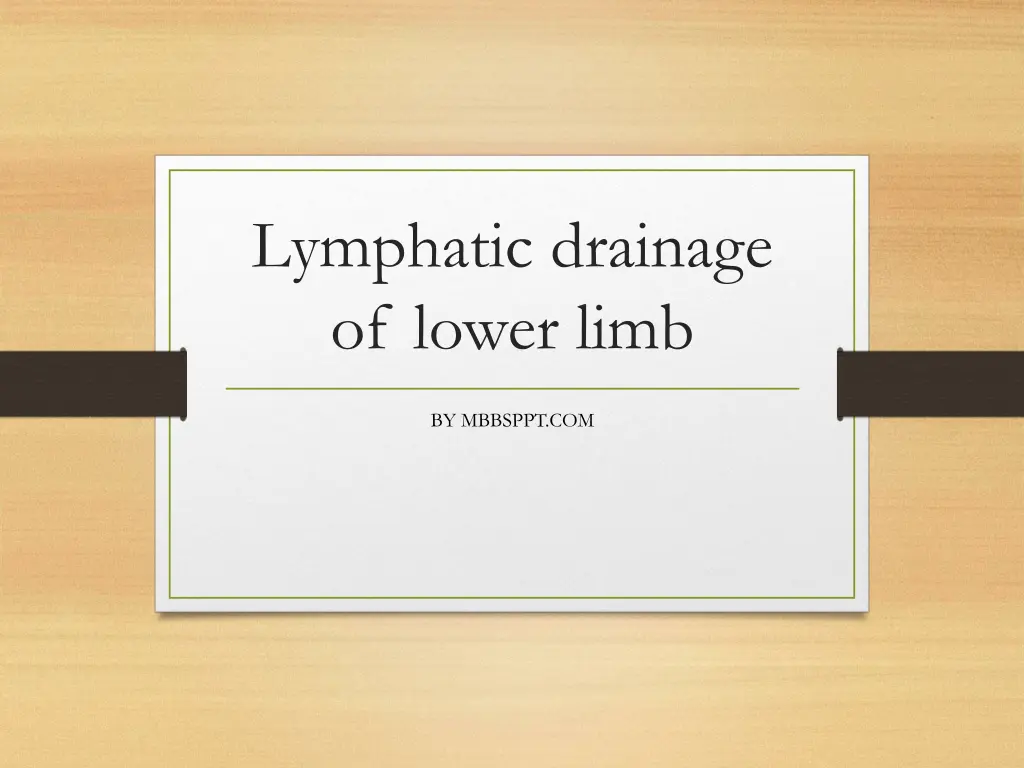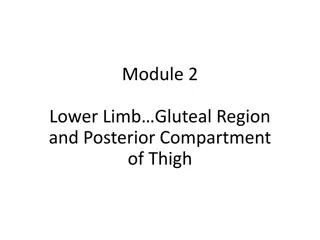
Understanding Lymphatic Drainage of Lower Limb
Explore the lymphatic drainage of the lower limb, where most lymph is drained into the inguinal lymph nodes. Discover the classification of lymph nodes and the pathways of superficial and deep lymphatic vessels in this detailed overview.
Download Presentation

Please find below an Image/Link to download the presentation.
The content on the website is provided AS IS for your information and personal use only. It may not be sold, licensed, or shared on other websites without obtaining consent from the author. If you encounter any issues during the download, it is possible that the publisher has removed the file from their server.
You are allowed to download the files provided on this website for personal or commercial use, subject to the condition that they are used lawfully. All files are the property of their respective owners.
The content on the website is provided AS IS for your information and personal use only. It may not be sold, licensed, or shared on other websites without obtaining consent from the author.
E N D
Presentation Transcript
Lymphatic drainage of lower limb BY MBBSPPT.COM
Lymphatic drainage of lower limb The lymphatic system functions to drain tissue fluid, plasma proteins and other cellular debris back into the blood stream, and is also involved in immune defense. Once this collection of substances enters the lymphatic vessels it is known as lymph; lymph is subsequently filtered by lymph nodes and directed into the venous system MBBSPPT.COM 2
Q. Describe briefly the lymphatic drainage of lower limb. A. Lymphatic drainage of lower limb: Most of the lymph from lower limb is drained into inguinal lymph nodes (except from deep part of gluteal region and back of thigh, which drain into internal iliac lymph nodes). Lymph nodes are classified as Superficial- superficial inguinal lymph nodes Deep- deep inguinal and popliteal lymph nodes MBBSPPT.COM 3
Lymphatic Drainage Of Lower Limb Three main groups 1. Superficial inguinal lymph nodes 2. Deep inguinal lymph nodes 3. Popliteal lymph nodes MBBSPPT.COM 4
Superficial Lymphatic Vessels The superficial vessels can be divided into two major subsets; (i) medial vessels, which closely follow the course of the great saphenous vein (ii) lateral vessels which are more closely associated with the small saphenous vein. MBBSPPT.COM 5
Superficial Lymphatic Vessels MBBSPPT.COM 6
Deep Lymphatic Vessels These are far fewer in number than their superficial counterparts and accompany the deep arteries of the lower leg. They are found in 3 main groups: Anterior tibial, Posterior tibial Peroneal These follow the corresponding artery respectively, and enter the popliteal lymph nodes. MBBSPPT.COM 7
Deep Inguinal lymph nodes Located medial to femoral V. Are approximately 3 to 5. Superior-most node is located in femoral canal(Cloquet's node drains glans penis) Receive lymphatics from superficial inguinal lymph nodes, popliteal lymph nodes and deep lymphatics from lower limb. Drain into external iliac nodes. MBBSPPT.COM 11
Popliteal lymph nodes Lie in popliteal fossa Receive lymph from: Knee joint Deep lymph vessels from leg Superficial lymph vessels from lateral aspect of leg & foot Drain into deep inguinal lymph nodes MBBSPPT.COM 12
Elephantiasis Caused by parasitic worms such as Wuchereia bancrofti. Lymph vessels are inflammed and blocked. Result in edema of lower limb. Hypertrophy of skin & subcutaneous tissue MBBSPPT.COM 13
Clinical Relevance: Lymphadenopathy Lymphadenopathy is characterised by an abnormality in size, number or consistency of any lymphatic nodes within the body. This is usually in response to infection, malignancy or an auto-immune condition. Abnormality of the inguinal vessels should always be viewed suspiciously. The superficial inguinal nodes receive drainage from the penis, scrotum, buttocks and abdominal wall as far as the umbilicus. Suspicion of lower limb lymphadenopathy therefore should include a full examination of both the lower limb and these structures. In males, the testicles follow a different lymphatic route, and drain directly to the para-aortic nodes and therefore will rarely cause inguinal lymph node enlargement. MBBSPPT.COM 14
THANK YOU!






















